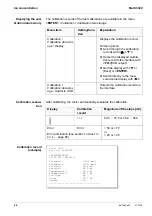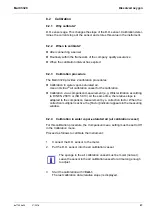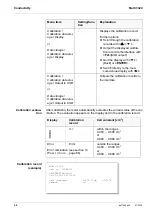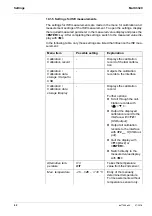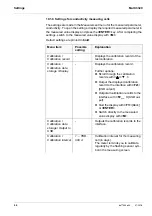
Conductivity
Multi 3320
54
ba77053e04
07/2018
9.2
Calibration
9.2.1
Why calibrate?
Aging slightly changes the cell constant, e.g. due to coatings. As a result, an
inexact measured value is displayed. The original characteristics of the cell can
often be restored by cleaning the cell. Calibration determines the current value
of the cell constant and stores this value in the meter.
Thus, you should calibrate at regular intervals (we recommend: every 6
months).
9.2.2
When to calibrate?
After connecting a sensor
Routinely within the framework of the company quality assurance
When the cleaning interval has expired
9.2.3
Determining the cell constant (calibration in control standard)
You can determine the actual cell constant of the conductivity measuring cell
by calibrating with the control standard in the following ranges:
The cell constant is determined in the control standard, 0.01 mol/l KCl. Cell
constants outside the ranges quoted above cannot be calibrated.
For this calibration procedure, the
Measuring cell
setting must be set to cal in
the
Measurement
menu. Proceed as follows to determine the cell constant:
0.450 ... 0.500 cm
-1
(e.g.
TetraCon 325
with a nominal cell constant of 0.475 cm
-1
)
0.800 ... 0.880 cm
-1
(e.g.
KLE 325
with a nominal cell constant of 0.840 cm
-1
)
In the default condition, the calibrated cell constant of the meter is set to
0.475 cm
-1
(conductivity sensor
TetraCon 325
).
1.
Connect the conductivity measuring cell to the measuring instrument.
2.
In the measured value display, select the conductivity parameter with
<M>
.
3.
Start the calibration with
<CAL>
.
The cell constant that was calibrated last is displayed.





